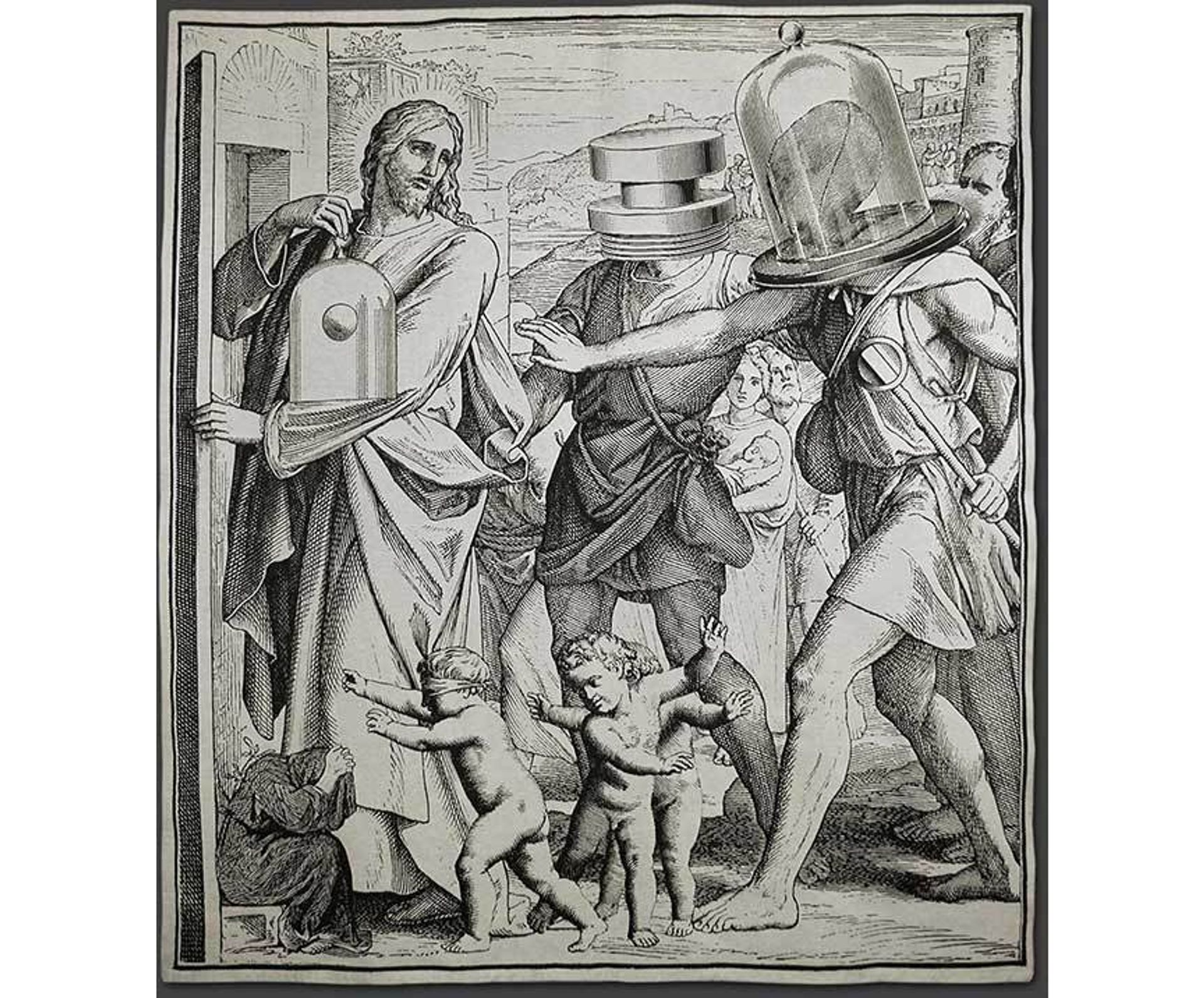In one way or another, much of the late, San Francisco-based artist Bruce Conner's best work is about radical change. His 1976 film CROSSROADS, which will be included in his retrospective at the Museum of Modern Art in New York (3 July-2 October), is culled together from footage of US nuclear weapons testing in the Marshall Islands. It is a catalogue of how swiftly such awful weaponry can alter a quiet landscape. Another film, REPORT (1967), includes footage of a serene John F. Kennedy riding through Dallas on 22 November 1963. Along with it comes audio of the journalist Sam Pate's frantic radio announcement, just after Kennedy was assassinated that day, that "something has happened in the motorcade route."
The best works at Conner's current show of tapestries and collages at Paula Cooper Gallery in New York operate according to the same principle. One, CHRIST CASTING OUT THE LEGION OF DEVILS (2003), depicts a story from the Gospel of Matthew in which Jesus exorcises two men of their demons. Here, violence invades the body: the men are so deeply affected by the devils—one of them has become a one-eyed polyhedron covered in tentacles—that they no longer bear any resemblance to their former selves.
Another work, BLINDMAN'S BLUFF (2003), pictures another story from Matthew in which Christ is about to leave Jericho, but not before he turns to heal a blind man named Bartimaeus. In Conner's work, Bartimaeus's blindness has transformed his head into a piston. All-seeing Christ, on the other hand, carries a glass dome.

Like the rest of the tapestries in the show (there are five in total, along with 12 collages), these works borrow heavily from prints by the German Romantic artist Julius Schnorr von Carolsfeld. Schorr's Picture Bible (1857-60) was wildly popular in its day, but Conner saw that, for all its narrative clarity, much of the book lacked spirit. The bedevilled men in Schorr's exorcism print are too human to be frightful; they are simply men with wings. His blind man, too, is not fully imbued with his disability. Whatever changes these men are in the midst of is not deeply enough felt.
Conner originally made each of these tapestries as a small collage, which was the perfect medium for his tinkering; it is inherently about changing one thing into another. So it makes sense that another work depicts a scene reported in all four Gospel in which Mary Magdalene anoints Christ with a fine perfume. Christ's disciples, in each account, are indignant. "To what purpose is this waste?" they ask in Matthew. "For this ointment might have been sold for much, and given to the poor." Christ comes to her defence: "For in that she hath poured this ointment on my body, she did it for my burial."
The upheavals that are to come—the Passion, Crucifixion, Entombment and Resurrection—are monumental. But in this work, Conner has hushed the turmoil for a moment. Quietude can be a radical change too.
Bruce Conner, Paula Cooper Gallery, New York, until 15 July

